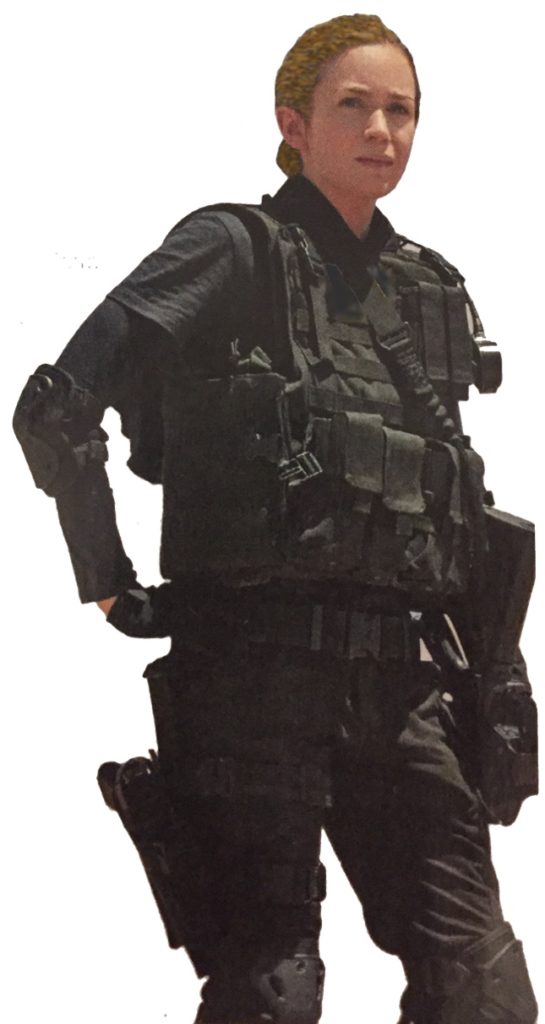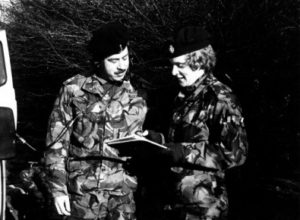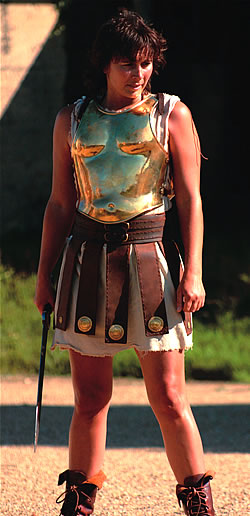 This could be a tricky subject, but if your stories have spies, special forces, military and special police units with a robust Roman attitude, you are going to get weapons of one sort or another. Anything else would be unrealistic.
This could be a tricky subject, but if your stories have spies, special forces, military and special police units with a robust Roman attitude, you are going to get weapons of one sort or another. Anything else would be unrealistic.
However, my books are about people, not a way of seeing how much technical research I can reproduce on the pages. The characters’ clothes, meals, equipment and weapons enrich their actions, set them in context and take their story forward. Weapons, correctly inserted into a story, indicate extreme tension, danger, seriousness of purpose or peril of life. But if any detail is not essential to the scene or story, that detail stays out.
As with any other aspect of world building in any genre, writers should research the area thoroughly, even if they discard 98% of it in their writing. I’m a fussy boots; I like to know how something feels, how heavy it is, what it looks and smells like, what I experience when holding, cleaning and, in the case of a gun, firing it.
Luckily, I’ve done this when I was was a member of a special communications regiment in the 1980s. Yes, it’s a long time ago, but it stays with you. The most important part of weapons handling is training, especially safety training. After that, practice, practice and more practice. Training in weapon use and handling is an essential element towards competence, let alone proficiency.
 My own experience includes Browning Hi Power 9mm pistol, SMG (Sterling Small Machine Gun), SLR (FN FAL L1A1 variant Self-Loading Rifle) – all a bit long in the tooth now, but good basic weapons. I trained mostly with the first two, but whether the user has the latest Glock, SIG Sauer, bullpup assault rifle or honeycomb-sighted sniper rifle, the basics are the same – safety first and, yes, training and practice. And woe betide any operative who doesn’t clean their weapon. Not only could it not work or even blow up in your face, you could be put on a charge; a terrifying prospect – just ask any soldier.
My own experience includes Browning Hi Power 9mm pistol, SMG (Sterling Small Machine Gun), SLR (FN FAL L1A1 variant Self-Loading Rifle) – all a bit long in the tooth now, but good basic weapons. I trained mostly with the first two, but whether the user has the latest Glock, SIG Sauer, bullpup assault rifle or honeycomb-sighted sniper rifle, the basics are the same – safety first and, yes, training and practice. And woe betide any operative who doesn’t clean their weapon. Not only could it not work or even blow up in your face, you could be put on a charge; a terrifying prospect – just ask any soldier.
When I read all kinds of gung-ho stuff where people fire a weapon for the first time and succeed in killing a bad guy, then drop a pistol in the mud or sand in a desert and it fires first time, I tut and roll my eyes. Safe and clean – always. Have I mentioned that?
In Roma Nova – Carina
Carina’s favourite firearm is a Glock 17, one of a series of polymer-framed, short recoil-operated, locked-breech semi-automatic pistols. There are several variants and modified versions; I’m sure the Roma Novan Imperial Armoury Factory specified its own version when ordering from the New Austrian manufacturer Glock Ges.m.b.H.
However, I just use the term ‘Glock’ in the text as the essential thing is to convey the use of a handgun in a tense moment in a scene, not go on about the type and variant. But if she uses a compact sized version for a specific reason, I highlight it.
“I bent down to the freezer and pulled a pizza out of the middle drawer along with a plastic bundle of bubble wrap. Inside was a freezer baggie with my Glock. At the back of the next compartment, the ammunition clips. It was a compact but deadly 177 mm of firepower.” (CARINA)
Carina is tasked to use a sniper rifle in a containment operation, but competent as she is, in a novel we need to know how she feels about it:
“I clutched my new rifle and scope. I’d had five minutes to sight it as best I could with the help of an armoury sergeant from the air force base. If I hit anything, it would be a miracle. But none of the others was in any different place.” (INCEPTIO)
Up on the mountain, all I needed to write was that it was a rifle with a honeycombed sight because it was essential the Praetorian Guard team stay covert.
[Team leader to Carina] “Take a really slow sweep across an arc in front of the admin centre door. Get to know every mark on it, the handles, the rim, every detail. Don’t worry, the sight glass is honeycombed. It won’t reflect.” (INCEPTIO)
And how did she learn to use a rifle? Obviously, this was a skill developed during her military training, but it started a while before…
“While most of our group could fire pistols, only a few were used to rifles. I had the benefit of Uncle Brown’s homespun tuition over the years. He’d been granted a gun licence like most farmers; he’d insisted we all learned to shoot and practise weekly. Girls should be able to blast away any vermin, he’d said, especially on an isolated farm.
On the range, I hit the target with satisfactory clusters. I was surprised I could still dismantle, clean and reassemble the weapon without having any parts left over. I started forgiving my father’s cousin.” (INCEPTIO)
Aurelia and time periods
Like any historical detail, it’s wise to check what weapons are current. Glock pistols only entered service in 1982, so Aurelia in the 1960s uses a double-action service revolver, make not specified(!) and a (generic) rifle.
” ‘On my mark,’ I whispered into my radio, hoping our quarry couldn’t hear through the snow. I unslung my rifle, counted to three and stood up.”(AURELIA)
But by the early 1980s when INSURRECTIO and RETALIO are set, Aurelia is cleaning a pistol, not a revolver. It’s a quiet time before action when she and the other members of the liberating forces are focusing their thoughts on the battle ahead. Here, you can integrate some technical detail in with Aurelia’s feelings:
“She handed me a pistol without a word. I was surprised how strange it felt as I began to strip it. But my fingers and some deep memory remembered how to pull the slider off the frame and release the barrel. The methodical cleaning and wiping was soothing, the smell of the cleaning lubricant sharp but not disturbing. Although surrounded by others carrying out the same task I felt a moment of isolation, of quiet. Nobody spoke; it seemed as if they were gathering in their personal strength. Once done, I carried out a function check and pushed the magazine in. A satisfying clunk. Yes, it was ready and so was I. (RETALIO)
Knives – the ‘softer’ option?
Knives are ‘softer’ in a way and Carina’s preferred weapon, although no less deadly. But they produce a closer and more physical encounter than a firearm:
“He raised his assault rifle. In the second before he could steady it to aim, I whipped out one of my carbon knives and sprang at him, slamming him down. The rifle crashed to the ground and rolled away. I shoved the blade up through his chest, aiming for the heart but his breast bone deflected it, jarring my wrist. I threw my knife down, crooked my elbow to drive it into his neck. As I shifted my weight to make the jab, he freed his arm enough to grab his pistol.” (PERFIDITAS)
But Carina and especially Aurelia are fully aware that knives represent something terrifying to ‘normal’ people who wouldn’t have experience with knives other than in the kitchen. When Aurelia, her security chief, and and her daughter Marina are clandestinely approaching Aurelia’s farm which has been taken over by Aurelia’s enemy’s thugs, Aurelia has to arm Marina, just in case:
“I fished in my backpack and held a black plastic handle, about fifteen centimetres long, in Marina’s direction. I pressed on the depression at one end and a steel blade sprang out.
She flinched.
‘Here, take this.’ I folded the blade back into its handle. ‘I don’t expect you to fight aggressively – leave that to Callixtus and me. But you have to be able to defend yourself.’
She nodded slowly, her eyes staring at the thing I’d laid in her hand.
‘I know it’s frightening, darling, but you have to make this one last effort. We might be a little busy once we get into the farm.’
And Aurelia’s knife in the 1980s is stainless steel, while Carina’s in the 21st century is carbon steel. Technology moves on…
Roman stuff?
Of course!At the beginning of SUCCESSIO, Carina’s Praetorian Guard unit is demonstrating some legacy gladius skills to their British host unit:
“Not practised these days outside the professional games arena except by the military, training with a sharp, double-edged fifty centimetre carbon steel blade tended to concentrate the mind as well as honing reaction skills. Not mandatory – we used state of the art weaponry as normal – but all members of the unit were encouraged to become proficient with a gladius, if only to get used to close physical combat with an opponent. If you got cut, you got cut, then chewed out for being careless. Contrary to popular belief, the Roman short sword was more than fine for cutting and chopping motions as well as for thrusting. Not much had changed in shape since the Pompeii pattern used in the fourth century which had been spectacularly successful.” (SUCCESSIO)
And when facing her lifelong enemy, Aurelia put on modern caesti, modelled on Ancient Roman hand protectors used by boxers:
Juno, I was a wreck. I’d refused Numerus’s offer of a service revolver. If Marina was anywhere near Caius, I couldn’t risk her being caught in crossfire or by a ricochet. I’d kept it simple; a knife in a back waist holster along with a set of handcuffs. I clipped caesti around my hands. Unlike the ancient clumsy boxing gloves, these were chain-link mittens designed to protect your hands as well as deepen any blow. (AURELIA)
So, when using weapons in a writing sense the guiding principals are research and context. As with gratuitous sex or violence, superfluous and laborious weapons descriptions detract from pace and ultimately from the reading experience.
Would you agree?
Alison Morton is the author of Roma Nova thrillers – INCEPTIO, PERFIDITAS, SUCCESSIO, AURELIA, INSURRECTIO and RETALIO. CARINA, a novella, is available now. Audiobooks are available for the first four of the series.
Get INCEPTIO, the series starter, for FREE when you sign up to Alison’s free monthly email newsletter. You’ll also be first to know about Roma Nova news and book progress before everybody else, and take part in giveaways.














